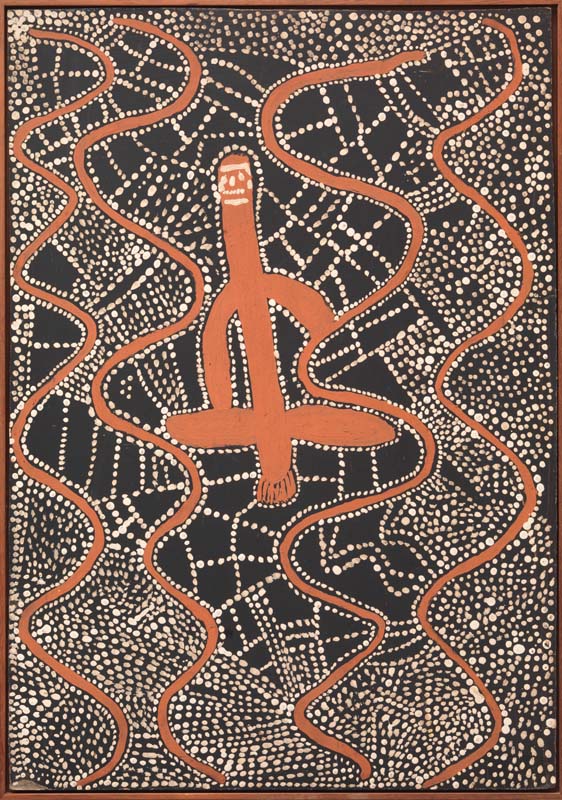We acknowledge the Traditional Owners of the land on which the Queensland Art Gallery | Gallery of Modern Art stands and recognise the creative contribution First Australians make to the art and culture of this country.

Timmy Payungka Tjapangati / Pintupi people / Australia c.1940–2000 / Ceremonial snake story 1972 / Synthetic polymer paint on board / 55 x 38.5cm / Purchased 1995 with a special allocation from the Queensland Government. Celebrating the Queensland Art Gallery’s Centenary 1895–1995 / Collection: Queensland Art Gallery / © Estate of the artist / Licensed by Aboriginal Artists Agency Ltd
Timmy Payungka TjapangatiCeremonial snake story 1972 1972
On Display: QAG, Gallery 13
This painting depicts designs associated with the Snake Dreaming which travelled west and then north from Wilkinkarra (Lake Mackay). This Dreaming travels through Mapamutu to Tirrikakau.1
Endnotes:
1 Letter from Papunya Tula Artists Organisation, 18 May 1997.
Timmy Payungka Tjapangati was born just west of Central Lake Mackay. His family came eastward to the Haasts Bluff area in search of rations of flour and tea when he was a child. They later travelled back into Pintupi territory.
Tjapangati was one of the first group of Pintupi to be brought into the newly established settlement of Papunya in the 1960s. Part of the original group of painters at Papunya in 1971, he moved to Kintore when it was established in 1981 and further west to Kiwirrkura in the mid 1980s. He is a key figure for the important claypan site of Parrayingi, where in pre-contact times many people gathered in the large depressions formed by the claypan hollows for ceremonies after good rains.
Tjapangati’s works are part of that body of work which represents the beginnings of the most significant Aboriginal art movement in this country. All of the Aboriginal artists involved with the Papunya Tula art movement have become significant practitioners and have established national and international reputations. Tjapangati’s subjects or themes are Bush Tomato, Dancing Women, Dingo, Snake, Water and the Wilkinkarra Snake from this region.
Endnotes:
Vivien Johnson, Aboriginal artists of the Western Desert: A Biographical Dictionary, Craftsman House, East Roseville, NSW, 1994, pp.162–3.